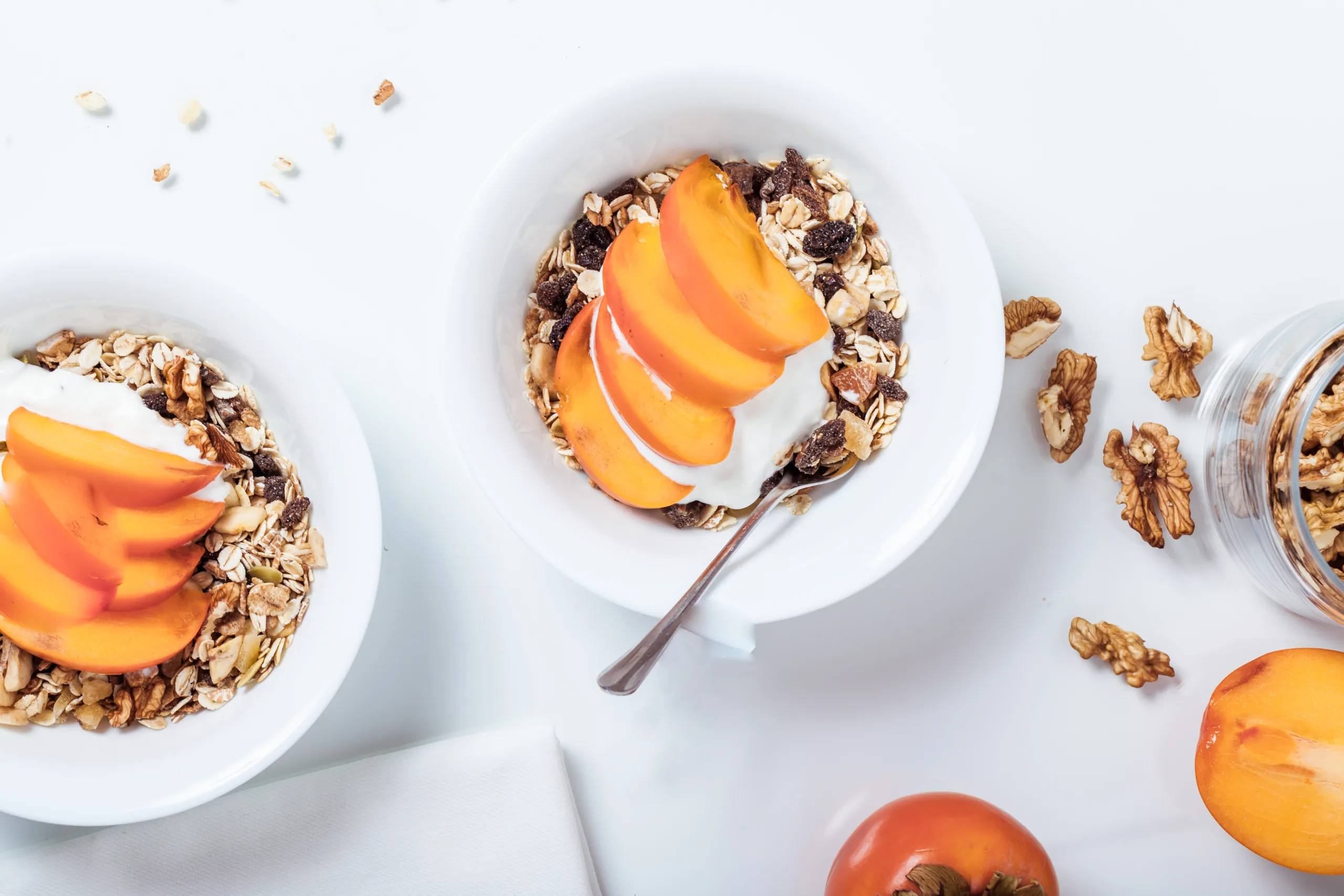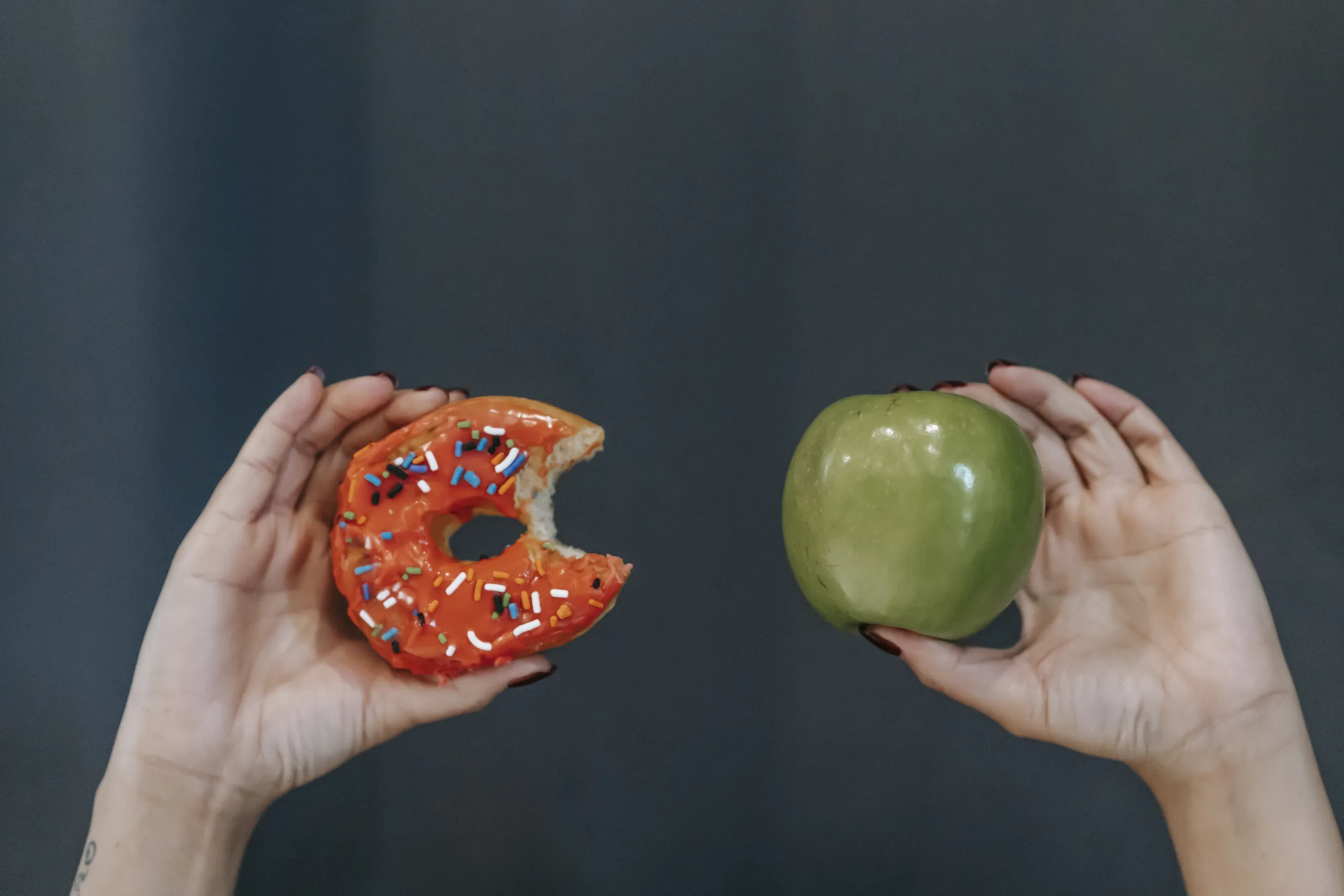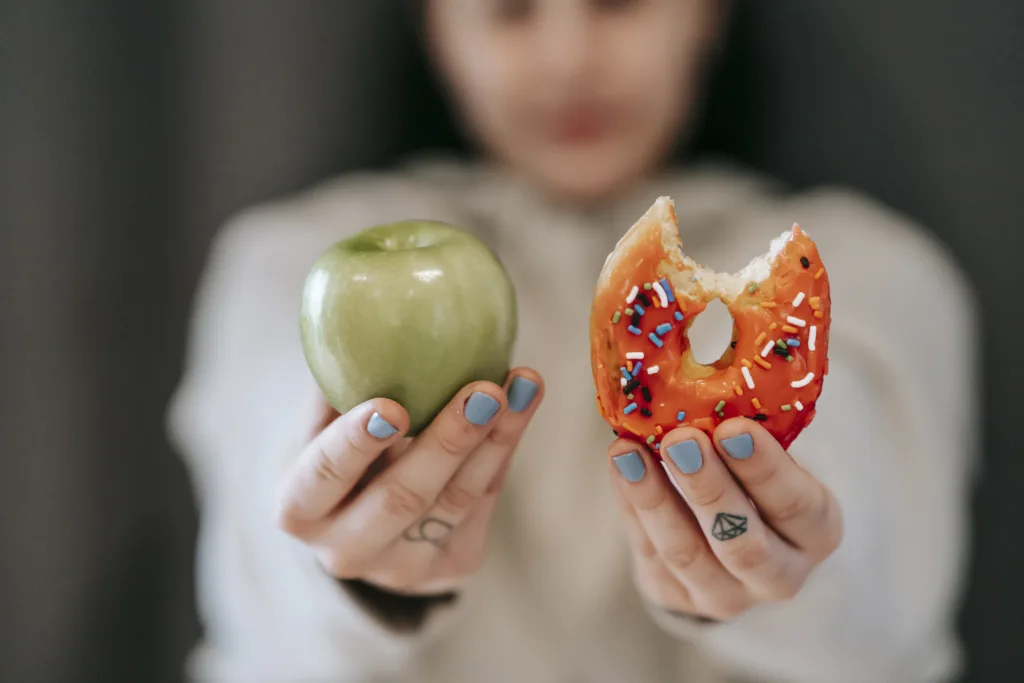Do you have to give up sugar if you follow a low FODMAP diet?
If you have been diagnosed with irritable bowel syndrome (IBS) or other digestive issues, following a low FODMAP diet may help alleviate your symptoms. However, it can be difficult to know what foods are and aren’t allowed on the diet. One question many people have is whether they can still enjoy sugar while following a low FODMAP diet. This article will answer that question and provide some ideas for how to enjoy sweet treats while still following the rules of the diet.
A Low FODMAP Diet is a dietary approach that aims to reduce the levels of fermentable short-chain carbohydrates (known as FODMAPs) in the diet, with the goal of reducing symptoms associated with irritable bowel syndrome (IBS).
Introduction
The low FODMAP diet is a relatively new type of diet that helps to reduce gastrointestinal symptoms in people with digestive issues. It is gaining popularity due to its potential health benefits, such as reducing inflammation, improving digestion and helping to relieve symptoms of Irritable Bowel Syndrome (IBS). In this article, we will discuss the benefits of the low FODMAP diet and how it can help those suffering from digestive issues.
What are FODMAPs?
FODMAPs are a type of carbohydrate found in certain foods that can be difficult for some people to digest. They can be found in many common foods such as wheat, onions, garlic, honey and apples. These carbohydrates are not completely absorbed in the small intestine and can trigger symptoms such as gas, bloating, pain and diarrhea in some individuals. By avoiding foods high in FODMAPs or limiting their intake, people with digestive issues may be able to reduce their symptoms.
Benefits of Low FODMAP Diet
There are several potential benefits associated with a low FODMAP diet. First and foremost, it may help to reduce gastrointestinal symptoms in people with digestive issues. By avoiding or limiting high FODMAP foods, individuals may be able to decrease their levels of abdominal pain, bloating and gas significantly. Additionally, research suggests that a low FODMAP diet may be beneficial for those suffering from IBS as it has been found to reduce IBS-related symptom severity. Furthermore, the diet may also help to improve overall digestion by reducing inflammation in the digestive tract.
In addition to its potential health benefits for those with digestive issues, the low FODMAP diet has also been found to have other positive effects on overall health. For example, research suggests that following a low FODMAP diet may improve gut microbiota diversity which is important for maintaining good health. Additionally, it may also help to improve bone density by increasing calcium absorption due to its effect on gut bacteria. Finally, following a low FODMAP diet has been linked with improved mental health due to its effect on gut bacteria which have been linked with mood disorders such as anxiety and depression.
Overall, the low FODMAP diet has many potential benefits for those suffering from digestive issues as well as general health benefits for everyone else. By avoiding or limiting high FODMAP foods it can help reduce gastrointestinal symptoms while potentially improving overall health and wellbeing through its effects on gut bacteria and calcium absorption.
Click here to preview your posts with PRO themes ››
Sugars Allowed on a Low FODMAP Diet
FODMAPs (Fermentable Oligosaccharides, Disaccharides, Monosaccharides and Polyols) are a group of carbohydrates found in many foods that can be difficult to digest. For some people, eating foods that contain FODMAPs can cause digestive symptoms like bloating, gas and abdominal pain. Eating a low FODMAP diet can help reduce these symptoms.
When following a low FODMAP diet, it is important to know which sugars are allowed. Monosaccharides (single sugars) such as glucose, fructose and galactose are allowed in generally small amounts. Disaccharides (double sugars) including sucrose (table sugar), lactose and maltose are also allowed in limited amounts. Polyols (sugar alcohols) such as sorbitol, mannitol and xylitol are also allowed in small amounts.
It is important to check food labels for added sugars when following a low FODMAP diet as some added sugars may contain FODMAPs or other ingredients that could trigger digestive symptoms. For example, honey and agave syrup may contain high levels of fructose so should be avoided. It is best to check with a registered dietitian or doctor if you have any questions about what types of sugar you should be eating on a low FODMAP diet.
How Much Sugar Can I Have on a Low FODMAP Diet?
A low FODMAP diet is a helpful tool for managing digestive symptoms. It can help reduce symptoms of irritable bowel syndrome (IBS) and other digestive issues. But, due to its restrictions on certain types of carbohydrates, it can be difficult to know how much sugar you should be having.
Sugars are classified as either simple or complex carbohydrates. Simple sugars are found naturally in foods like fruits and dairy products. These are known as monosaccharides, and include fructose, glucose, and galactose. Complex sugars are disaccharides and include sucrose (table sugar), lactose (milk sugar), and maltose (malt sugar).
On a low FODMAP diet, you should limit your intake of simple sugars, as they can trigger digestive symptoms in some people with IBS. This means avoiding processed foods high in added sugars such as candy, cake, cookies and ice cream. You should also limit your consumption of high-FODMAP fruits such as apples, pears, mangoes and watermelon which contain high amounts of fructose.
When it comes to complex sugars like sucrose or lactose, the amount you should have depends on your individual tolerance level. Some people may be able to tolerate small amounts of these sugars without experiencing any digestive symptoms. However others may find that even small amounts can cause bloating or diarrhea. The best way to determine your tolerance level is to keep a food diary and note any reactions after eating certain foods containing complex sugars.
In general, it is best to stick to unrefined forms of sugar such as honey or pure maple syrup when following a low FODMAP diet. These contain fewer complex carbohydrates than processed white sugar or artificial sweeteners so they won’t trigger digestive symptoms in most people with IBS. However it is important to remember that everyone’s body is different so you may need to experiment with different types of sweeteners until you find one that works for you.
Foods High in Sugar to Avoid on a Low FODMAP Diet
Eating a low FODMAP diet can be beneficial for those with gastrointestinal issues, such as irritable bowel syndrome (IBS). To ensure that your diet is low in FODMAPs, it is important to limit your intake of foods that are high in sugar. Sugar can be found in many foods, but some of the most common sources include processed foods and items with added sweeteners. Examples of these include candy, cookies, cakes, sodas and other sugary beverages, jams and jellies, ice cream and dairy-based desserts. It is also important to check nutrition labels for added sugar in foods such as breakfast cereals and condiments like ketchup or barbecue sauce.
Click here to preview your posts with PRO themes ››
In addition to avoiding processed sweets and added sugars, it is important to pay attention to naturally-occurring sugars when following a low FODMAP diet. These include fruits such as apples, pears, mangos and watermelons; some vegetables including carrots, beets and sweet potatoes; milk products such as yogurt and cheese; whole grains like barley or wheat bread; dried fruits like dates or raisins; honey and maple syrup; as well as certain alcoholic beverages like beer or wine.
By limiting or avoiding these foods high in sugar while on the low FODMAP diet you can help manage your symptoms while still enjoying delicious meals. Be sure to speak with your registered dietitian or physician if you have any questions about what types of food to eat while on the low FODMAP diet.

Non-FODMAP Sugars to Consider
If you’re following a low FODMAP diet, it’s important to know what sugars are acceptable. Non-FODMAP sugars are those that don’t contain Fructose, Lactose, Galactooligosaccharides (GOS) or Polyols. Some examples of non-FODMAP sugars include sucrose, glucose, maltose and dextrose. While these sugars still contain carbohydrates, they don’t contain FODMAPs and can be consumed in moderation.
Sucrose is one of the most common non-FODMAP sugars found in processed foods and beverages. It’s a disaccharide composed of glucose and fructose molecules bonded together, but because the bond is strong enough to prevent the body from breaking it down into individual molecules, it doesn’t contain any FODMAPs. Glucose is another common non-FODMAP sugar found in many food products. It’s a monosaccharide that doesn’t contain any FODMAPs.
Maltose is another type of non-FODMAP sugar found naturally in some grains like barley and rye. It’s composed of two glucose molecules bonded together but because it doesn’t contain any Fructose or Lactose molecules, it can be consumed on a low FODMAP diet. Dextrose is also a type of non-FODMAP sugar found in some processed food products and beverages. It’s similar to Glucose but it’s slightly sweeter and more soluble in water than Glucose.
If you’re looking for an alternative sweetener for your low FODMAP diet, consider using one of these non-FODMAP sugars instead of traditional high FODMAP sweeteners like honey or agave syrup. While these sugars still contain carbohydrates which can affect blood sugar levels, they don’t contain any Fructose or Lactose which can trigger IBS symptoms in people with sensitivity to those compounds.
It’s important to remember that just because something is labeled as “low FODMAP” does not mean it’s safe for everyone on the diet – so always read labels carefully and check with your doctor if you have questions about whether something is right for you!
The Possible Effects of Eating Too Much Sugar on a Low FODMAP Diet
Eating too much sugar on a low FODMAP diet can lead to a number of negative side effects, including digestive distress, fatigue, and poor blood sugar control. Digestive distress can occur when the body is unable to properly process the high amount of sugar consumed. This can lead to abdominal pain, bloating, constipation and/or diarrhea. Fatigue is another common symptom associated with eating too much sugar on a low FODMAP diet. Consuming large amounts of sugar can cause your body to become depleted of essential vitamins and minerals due to its high glycemic index, which leads to feelings of tiredness and lack of energy. Poor blood sugar control is another possible effect of eating too much sugar on a low FODMAP diet. High amounts of sugar can cause your blood sugar levels to spike and crash quickly, leading to mood swings, concentration difficulties, and headaches.
Click here to preview your posts with PRO themes ››
It is important to be aware of the potential effects that too much sugar can have on a low FODMAP diet so that you can make better food choices that will help you stay healthy and energized. Eating whole grains, fruits, vegetables, lean proteins, nuts and seeds in moderation can help ensure that your body has the necessary nutrients it needs while helping you avoid any digestive distress or fatigue caused by eating too much sugar.
Alternatives to Sugar on a Low FODMAP Diet
For people on a Low FODMAP Diet, finding alternatives to sugar can be tricky. Many traditional sweeteners contain hidden FODMAPs and are not suitable for the diet. Fortunately, there are a few sugar substitutes that can be used in place of sugar. These include stevia, maple syrup, honey, agave nectar and coconut sugar.
Stevia is derived from the leaves of the stevia plant and is naturally calorie-free and low in digestible carbohydrates. It is approximately 200 times sweeter than sugar, so it needs to be used in much smaller quantities. Maple syrup is another great substitute for those on a low FODMAP diet – it has a low glycemic index and contains no fructose or any other FODMAPs.
Honey is another popular alternative to sugar with a sweet flavor and mild aftertaste. It’s important to look for pure honey that does not contain added sugars or sweeteners as these may contain hidden FODMAPs. Agave nectar is derived from the agave plant and contains fructose but in much lower quantities than other sugars, making it acceptable on a Low FODMAP diet when consumed in moderation.
Finally, coconut sugar is an unrefined form of natural sugar made from the sap of coconut tree blossoms. It contains some trace amounts of fructose but it’s still considered low in FODMAPs as long as it’s consumed in moderation. All these alternatives can be used in baking or added to beverages instead of regular table sugar for those following a Low FODMAP Diet.
Ultimately, the best way to find out which sugars work best for you on your Low FODMAP Diet is through trial and error – everyone’s body responds differently to different types of sweeteners so make sure you take your time and experiment until you find what works for you!

Conclusion
Sugar can be a part of a low FODMAP diet, but it is important to be mindful of the type and amount of sugar you are consuming. Fructose and lactose are two common FODMAPs found in many sugars so it is important to check labels before consuming. It is also important to practice moderation when consuming sugar as too much can have negative health effects. There are alternatives to sugar that can be used on a low FODMAP diet such as stevia, xylitol, and monk fruit. All of these sweeteners are low in FODMAPs and provide a good alternative for those following a low FODMAP diet. Finding the right balance between enjoying sweet foods without overdoing it can help you maintain your health and well-being on a low FODMAP diet.
Overall, having sugar on a low FODMAP diet is possible but it requires careful monitoring and moderation. Keeping track of what types of sugars you consume along with the amount you have can help you manage your health while still enjoying some sweet treats. With just a few simple adjustments, having sugar on a low FODMAP diet can be enjoyable as well as safe.

